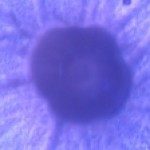Lien vers Pubmed [PMID] – 25474009
PLoS Genet. 2014 Dec;10(12):e1004824
Following antifungal treatment, Candida albicans, and other human pathogenic fungi can undergo microevolution, which leads to the emergence of drug resistance. However, the capacity for microevolutionary adaptation of fungi goes beyond the development of resistance against antifungals. Here we used an experimental microevolution approach to show that one of the central pathogenicity mechanisms of C. albicans, the yeast-to-hyphae transition, can be subject to experimental evolution. The C. albicans cph1Δ/efg1Δ mutant is nonfilamentous, as central signaling pathways linking environmental cues to hyphal formation are disrupted. We subjected this mutant to constant selection pressure in the hostile environment of the macrophage phagosome. In a comparatively short time-frame, the mutant evolved the ability to escape macrophages by filamentation. In addition, the evolved mutant exhibited hyper-virulence in a murine infection model and an altered cell wall composition compared to the cph1Δ/efg1Δ strain. Moreover, the transcriptional regulation of hyphae-associated, and other pathogenicity-related genes became re-responsive to environmental cues in the evolved strain. We went on to identify the causative missense mutation via whole genome- and transcriptome-sequencing: a single nucleotide exchange took place within SSN3 that encodes a component of the Cdk8 module of the Mediator complex, which links transcription factors with the general transcription machinery. This mutation was responsible for the reconnection of the hyphal growth program with environmental signals in the evolved strain and was sufficient to bypass Efg1/Cph1-dependent filamentation. These data demonstrate that even central transcriptional networks can be remodeled very quickly under appropriate selection pressure.



